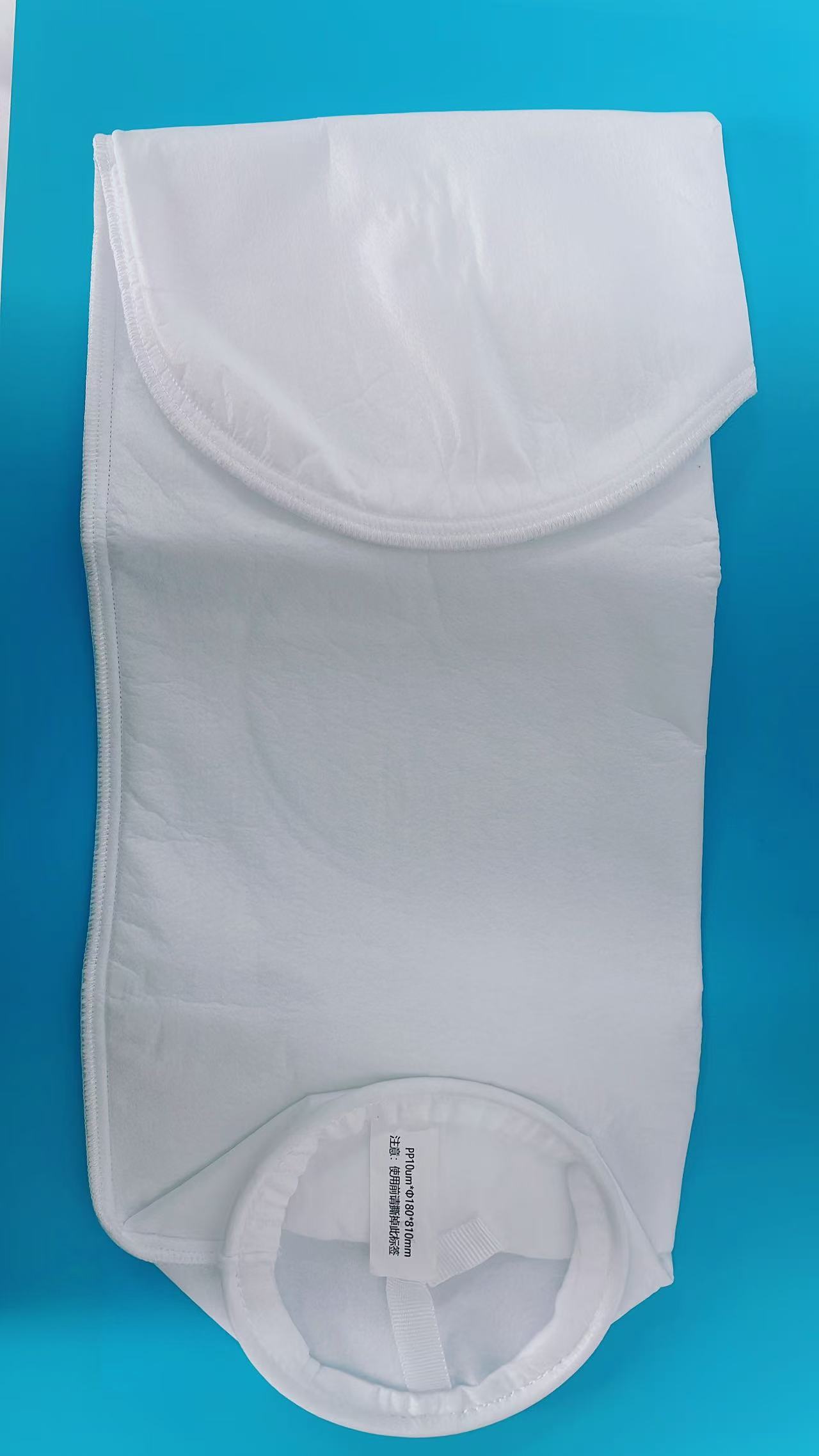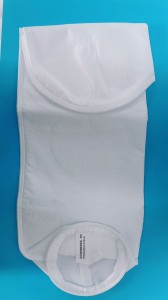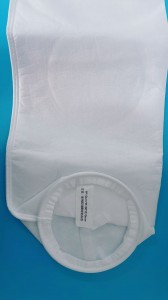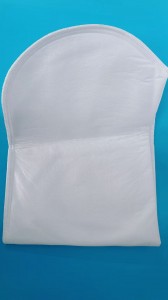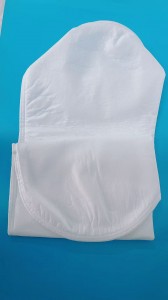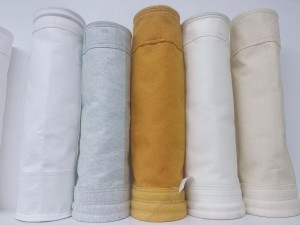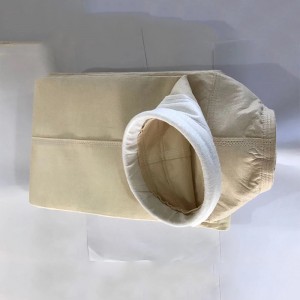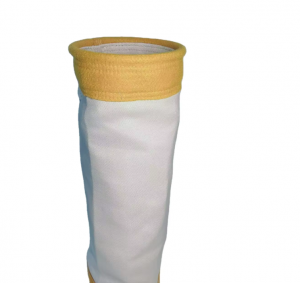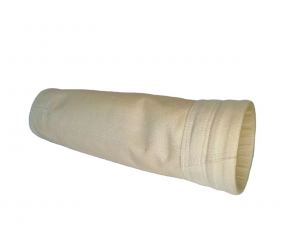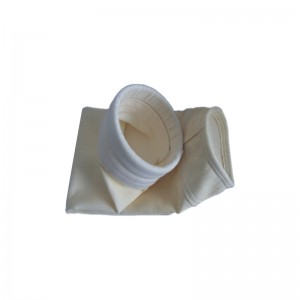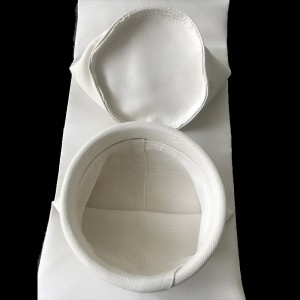Dewatering Filter Bag for Removing Sediment and Pollutants
A dewatering filter bag is a filtration component specifically designed to separate solid sediments, suspended matter, and pollutants from liquids, widely used in industrial wastewater treatment, municipal sludge dewatering, mining tailings processing, and other scenarios. Its core function is to achieve solid-liquid separation through efficient interception and dewatering, reducing the solid content in liquids or minimizing sludge volume.
I. Core Characteristics and Working Principle
1. Key Materials and Structure
- Materials:
- Primarily made of polypropylene (PP) or polyester (PET) fibers, offering acid-alkali resistance and wear resistance;
- Special scenarios (e.g., high temperature, strong corrosion) may use nylon (PA) or polytetrafluoroethylene (PTFE).
- Structural Design:
- Multi-layer composite filter cloth: Coarse outer layer intercepts large particles, while a fine inner layer captures tiny impurities to improve dewatering efficiency;
- High-strength stitching: Reinforced stitching on bag openings and edges prevents tearing during filtration.
2. Working Principle
- Filtration Stage: Sewage containing sediments enters the filter bag, where solid particles are trapped by the filter cloth, and water drains through the cloth pores;
- Dewatering Stage: External forces (e.g., pressure, vacuum, or gravity) squeeze the bag to further extract water from between particles, forming a filter cake with a moisture content of 50–80% (depending on the application).
II. Main Application Scenarios
1. Industrial Wastewater Treatment
- Scenarios: Heavy metal ion precipitates (e.g., copper hydroxide, iron hydroxide), slag particles in wastewater from chemical, metallurgical, and electroplating industries;
- Role: Reduces SS (suspended solids) concentration in wastewater to meet subsequent treatment or discharge standards, while recovering valuable metal particles.
2. Municipal and Environmental Engineering
- Scenarios: Sludge thickening tanks in wastewater treatment plants, river dredging slurry, construction piling wastewater, etc.;
- Role: Rapidly separates water from slurry, reducing sludge volume (volume reduction ratio up to 3:1) and lowering transportation and disposal costs.
3. Mining and Quarrying Industry
- Scenarios: Dewatering of tailings slurry, ore washing wastewater treatment, mine pit drainage purification, etc.;
- Role: 截留 ore particles and heavy metal pollutants, enabling water recycling and reducing environmental risks in tailings ponds.
4. Food and Chemical Industries
- Scenarios: Separation of fruit pulp residues in food processing wastewater, crystallization products in chemical reactions, etc.;
- Role: Recovers solid raw materials (e.g., starch, sugar residue) while purifying wastewater.
III. Key Selection Parameters
1. Filtration Precision and Pore Size
- Precision Range: Typically 5–200 microns, matched to sediment particle size:Pore Size Distribution: Choose surface filtration (uniform pores) or deep filtration (gradient pores). The former suits uniform particle 污水,while the latter fits complex water with multiple particle sizes.
- Coarse particles (e.g., sand): 50–200 microns;
- Fine suspended matter (e.g., colloids): 5–50 microns.
2. Dewatering Performance Indicators
- Water Permeability: Water flux per unit filter cloth area (L/m²·h). Higher permeability speeds up filtration but requires balancing with interception efficiency;
- Water Retention: The ability to retain water in the filter cake. Poor water retention improves dewatering efficiency (e.g., when used with flocculants).
3. Pressure Resistance and Strength
- Operating Pressure: Matches the pressure type of dewatering equipment (e.g., plate-and-frame filter presses can reach 0.6–1.0MPa, while vacuum filtration uses negative pressure);
- Tear Resistance: Select filter cloth with warp and weft tensile strength ≥1500 N/m to avoid damage under high pressure.
4. Chemical Compatibility
- pH Tolerance:Solvent Resistance: Choose PET or PTFE for oily wastewater to prevent PP from swelling and damaging.
- PP material: Suitable for pH 1–14 (resistant to strong acids and alkalis);
- PET material: Suitable for pH 4–10 (resistant to weak acids and alkalis, not concentrated acids).
IV. Supporting Equipment and Processes
1. Common Dewatering Equipment
- Plate-and-Frame Filter Press: Exerts hydraulic pressure to squeeze filter bags, suitable for high-concentration slurry dewatering with low filter cake moisture content (≤60%);
- Vacuum Filter: Uses negative pressure to suction water, suitable for fine-particle sludge with high processing efficiency but higher energy consumption;
- Centrifugal Filter: Separates solid-liquid via centrifugal force, suitable for uniform particle sediments with small footprint.
2. Pretreatment Processes
- Flocculant Addition: Adds polyaluminum chloride (PAC) or polyacrylamide (PAM) to sewage to agglomerate fine particles into large flocs, improving filter bag interception efficiency and dewatering speed;
- Pre-Filtration: Uses coarse filter bags (e.g., 200 microns) to remove large particles, protecting fine filter bags and extending service life.
V. Maintenance and Environmental Considerations
1. Maintenance Tips
- Cleaning Frequency:Damage Inspection: Regularly check stitching and the bottom of the bag, and replace promptly if damage is found to prevent material leakage.
- Reusable filter bags: Backwash with high-pressure water after each dewatering to remove residual particles in filter cloth pores;
- Disposable filter bags: Replace immediately when saturated to avoid clogging and reduced filtration efficiency.
2. Environmental Treatment
- Filter Cake Disposal: Filter cakes with high heavy metal content must be treated as hazardous waste (e.g., stabilized landfilling); general industrial filter cakes can be used for brick-making, landfilling, or incineration;
- Filter Bag Recycling: Choose recyclable materials (e.g., PP, PET) and send them to professional recycling companies to reduce white pollution.
VI. Comparison with Other Filtration Methods
| Filtration Method | Applicable Solid Content | Post-Dewatering Moisture Content | Cost (¥/ton of wastewater) | Advantages |
|---|---|---|---|---|
| Dewatering Filter Bag | 5–50 g/L | 50–80% | 5–15 | Low cost, simple operation |
| Membrane Separation | ≤5 g/L | 90–95% | 20–50 | High precision, high automation |
| Centrifugal Separation | 10–100 g/L | 60–85% | 10–20 | High efficiency, small footprint |
Selection Advice: Prioritize dewatering filter bags for medium-to-high solid content wastewater (>10 g/L), especially in cost-sensitive or mobile operation scenarios (e.g., emergency drainage, temporary construction wastewater treatment). For further optimization, provide parameters such as sewage composition and treatment volume to customize filter bag specifications and processes.
Product Detail
Product Tags
Write your message here and send it to us
